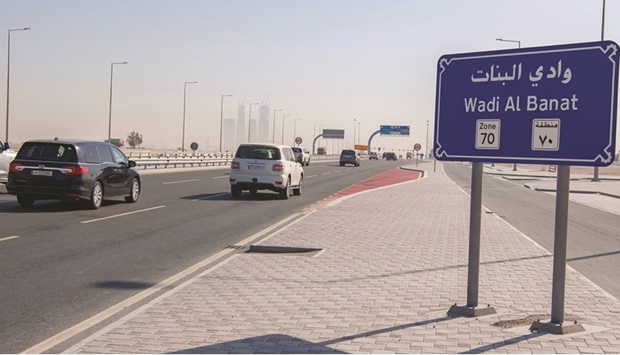The Public Works Authority (Ashghal) has completed construction works at Wadi Al Banat Junction, carried out as part of the Roads Improvement Works for Roads and Junctions in various areas of Greater Doha Project, Phase 7.
 Engineer Fahad Mohamed al-Otaibi, head of Western Area Section at the Roads Projects Department, said the new junction is highly important as it connects Al Khor Road with Al Shamal Road on one hand, and provides a link between Al Ebb, Leabaib and Al Kheesa areas. The junction also connects these three areas with the Jeryan Nejaima area to the South.
Engineer Fahad Mohamed al-Otaibi, head of Western Area Section at the Roads Projects Department, said the new junction is highly important as it connects Al Khor Road with Al Shamal Road on one hand, and provides a link between Al Ebb, Leabaib and Al Kheesa areas. The junction also connects these three areas with the Jeryan Nejaima area to the South.“The junction comprises three lanes in each direction to continue straight, and three other lanes to turn left in all directions. Development works involved road works at a total length of 2.3km, and the construction of a 1.5km service road serving residential areas at the southern side of the junction,” he explained in a statement issued by Ashghal.
In addition, the scope of works included the construction of 5.3km of stormwater drainage network lines at a depth of 32m using micro-tunnelling method, Intelligent Transportation System (ITS), an irrigation network of 3.8km, electric cables as well as installing traffic signals and 120 lighting poles.


“Ashghal opened the junction and completed roads in all directions, except for the northbound direction towards Rawdat Al Hamama area, to allow for the ongoing road works near Al-Khor Expressway, which are being carried out by Ashghal as part of its highways projects,” he explained.
Ashghal carried out Road Improvement Works for Roads and Junctions in Greater Doha (Phase 7) through Al-Jaber Hadeed Company, a local firm and under the supervision of Gulf Engineering & Industrial Consultancy. Priority was given to procuring local components and 85% of the project materials were from local sources.
Ashghal carried out Road Improvement Works for Roads and Junctions in Greater Doha (Phase 7) through Al-Jaber Hadeed Company, a local firm and under the supervision of Gulf Engineering & Industrial Consultancy. Priority was given to procuring local components and 85% of the project materials were from local sources.

